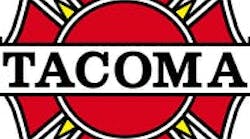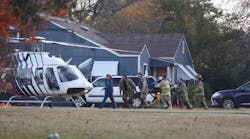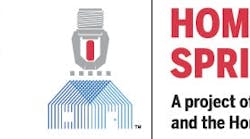Emergencies, whether natural disasters or human-induced crises, take a toll on people, organizations and the environment. When disaster strikes, it’s essential that the needs of diverse populations are addressed in a culturally sensitive and competent manner. That said, there are challenges, including in regard to how to incorporate cultural sensitivity effectively in planning and response efforts.
Cultural sensitivity
Cultural sensitivity is a vital component of emergency response. It ensures that the affected population is treated by responders with respect, understanding and dignity. Ignoring cultural differences can lead to miscommunications and oversights, which results in fewer people receiving the help that they need and/or an exacerbation of the crisis that they face.
A culturally sensitive response recognizes the unique cultural, religious and linguistic factors that shape people’s lives and ensure that relief efforts don’t degrade, marginalize or threaten people’s identities.
Challenges
Language barriers, different cultural beliefs and values, discrimination and biases challenge first responders during emergencies.
Language barriers. This is one of the most obvious issues for most to recognize. From my own personal experience, I have found that this is one of the most difficult issues to deal with when someone is hurt. You want nothing more than to fix a person’s problem but can’t begin to even work through your protocols because you can’t establish a baseline of information.
Miscommunication because of language differences hinders information dissemination and quick application of appropriate care. Addressing this barrier is vital for providing accurate, culturally relevant and lifesaving information.
Diverse cultural norms, values and beliefs. Different populations have unique customs, beliefs and practices that can affect how they process and respond to emergencies. A solid example of this is when you enter a home where it’s taboo to wear shoes inside of the home.
As an emergency responder, working to balance respect for the patient and family while still maintaining safety for crews is important. Something as simple as removing shoes can have unrecognized consequences when it comes to crew member safety. This decision-making process really begins with understanding the community that you serve and working with the jurisdiction having authority to ensure that there are clear guidelines and shared understanding of operations.
That said, failure to acknowledge these factors can result in misunderstandings and ineffective services.
Discrimination and biases. Unconscious biases and discrimination can create disparities in emergency service provision. This can lead to mistrust and tension between affected populations and members of emergency response teams.
It also is important to understand that, as a first responder, you might be dealing with issues from your previous experiences. In other words, biases go both ways. A key to successful interactions is to communicate politely and show empathy while working to understand.During emergency response
Cultural sensitivity isn’t something that happens overnight. It’s a process that departments must work into their education and training over time. You can’t order members to be culturally sensitive and expect it be so.
Cultural education and sensitivity training should be part of a department’s routine education and training programming.
Culturally inclusive planning. Inclusion of diverse perspectives in emergency planning helps to identify potential barriers, ensures equitable distribution of resources, and fosters a sense of trust and belonging among affected communities. Resources in the community for diverse perspectives include churches and day centers. Be part of the community and utilize opportunity to interact with its members any chance that you get.
Cultural competence training. Emergency responders should undergo regular training to enhance their cultural competence. This helps to enable them to respectfully address the unique needs and dynamics of the diverse populations that are in their community that they serve.
The Implicit Association Test (IAT) is an excellent training resource for departments and public service groups. You can find information at implicit.harvard.edu/implicit/takeatouchtest.html.
Collaboration with community leaders and organizations. Partnering with community leaders and local organizations can facilitate improved communication, identify trusted information sources and provide access to resources that meet the specific needs of diverse populations.
One example: partnering with churches and businesses for culturally specific religious items or foods during larger emergencies. This also can provide the ability to use pre-established communication boards or email chains for community outreach, training and recruitment.
An example that’s specific to recruitment is helping to educate regarding vaccination requirements and religious waivers that might be available to obtain to maintain religious beliefs. Overcoming the unknowns helps a department to recruit viable candidates that reflect the community that they serve.
Translation and interpretation services. Providing accurate, timely and culturally appropriate translations for essential information ensures that all affected communities have equal opportunity to access lifesaving guidance.
We have been fortunate in my department to have translation services available to us. Having the ability to call a language line to access a culturally competent native speaker undoubtedly supports our mission in emergency services.
For those who don’t have the luxury of access to a language line, I’ve found the use of visual communication cards to be very helpful in overcoming language barriers. A quick Google search will return everything from printable options to small, compact flip books that you can purchase to carry with you on calls. I carry a Kwikpoint visual language translator in my bag.
Addressing biases and discrimination. Emergency response teams should strive to create a safe and inclusive environment. This means acknowledging and addressing any implicit biases or discriminatory behaviors, to foster trust, cooperation and equitable service delivery. This begins in a professional way around the kitchen table at a company level.
Bias isn’t racism
Cultural sensitivity is a crucial component in developing effective emergency response plans, departmental education and training plans and addressing the diverse needs of at-risk communities.
One of the first steps to resolving any issue is to recognize that there is/might be an issue. I can’t tell you how many members who I had take an implicit bias test say, “I’m not racist.” It takes a little bit of work to help them to understand that bias isn’t racism and that bias comes from those things that often are unseen in our world around us. Relationships and understanding of what is right and what are good manners aren’t the same everywhere in the world. When members grasp this, they start to become more culturally competent.
By prioritizing inclusivity, cultural competence and collaboration, emergency response agencies can build stronger, more resilient communities in the face of crisis. Embracing cultural diversity isn’t only the morally responsible path forward but also the best way to ensure that we protect and serve everyone in need, regardless of their cultural background.







